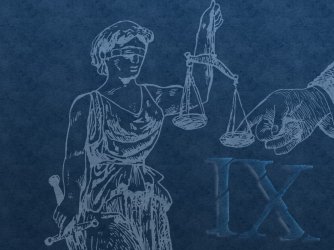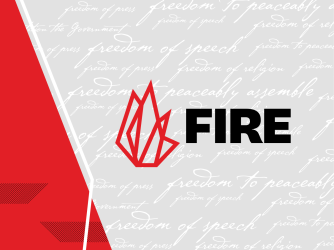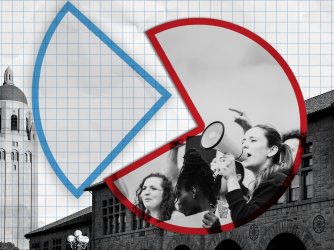Table of Contents
University of Iowa Asks Students How Best to Show Its Disregard for First Amendment

We haven’t revisited the deplorable censorship case of art professor Serhat Tanyolacar at the University of Iowa (UI) for some time now. It has not slipped FIRE’s mind, however, that UI has yet to demonstrate any awareness of the First Amendment principles it trampled on by censoring and publicly denouncing Tanyolacar’s work. FIRE and the National Coalition Against Censorship (NCAC) have harshly rebuked UI for its handling of the case, in both a joint letter and joint press release. And though I didn’t think my opinion of UI’s management of this case could get any lower, it turns out I was wrong.
As The Gazette (Cedar Rapids, Iowa) reports this week, according to emails obtained by the newspaper, UI actually ran a draft of UI President Sally Mason’s apology letter by “student leaders” offended by Tanyolacar’s work before that apology was issued, giving them an opportunity to review it and offer revisions. Seeking student input on campus statements is not a bad thing in itself, but UI’s doing so in this instance, while showing utter contempt for Tanyolacar’s First Amendment rights or the opinions of students who might truly value artistic freedom, adds new layers of outrage to this already outrageous case.
Tanyolacar, for Torch readers not familiar with his case, is a visiting professor at UI this year, and many of his works of art deliberately confront traumatic historical events. Tanyolacar installed one such artwork, titled “In Their Shoes,” in UI’s main outdoor public area (called the Pentacrest) on December 5, 2014. The work consists of a collage of newspaper images and headlines covering racial violence printed onto a robe and hood similar to those worn by members of the Ku Klux Klan. Though Tanyolacar was on hand to discuss the artwork and its anti-racist intent with students, many of whom came to understand and appreciate its intent after discussing it with him, UI officials forced Tanyolacar to remove the artwork within a few hours.
The campus email statement for which Mason sought input from students was actually the second such email that would be sent to the UI community. The first, from Vice President for Student Life Tom Rocklin, was sent the afternoon of December 5, after Tanyolacar’s artwork was removed. And while Rocklin’s statement is not the subject of The Gazette’s most recent reporting, we’d be remiss not to remind readers of how damaging and prejudicial it was—smearing Tanyolacar with the pronouncements that UI “is a diverse community with no tolerance for racism” and “[t]here is no room for divisive, insensitive, and intolerant displays on this campus,” while entirely ignoring the art’s intent and the fact that it was unquestionably protected by Tanyolacar’s First Amendment rights.
The email statement President Mason sent on December 7 was little better. Like Rocklin, Mason utterly ignored any mention of Tanyolacar’s clearly established First Amendment rights. Mason did, though, apologize to students “[f]or failing to meet our goal of providing a respectful, all-inclusive, educational environment.” If there’s any silver lining to this woeful statement, in light of The Gazette’s reporting, it’s that it would have been an order of magnitude worse if the students had had their way. As The Gazette reports:
Emails obtained Wednesday by The Gazette reveal UI administrators sent that draft to student leaders who had expressed indignation over the effigy, asking for “suggestions.” The students sent a “response draft” with a handful of changes and stronger language.
UI Vice President for Student Life Tom Rocklin said in internal emails that “some of what they have written, I think, is out of the question.”
The students, for example, suggested Mason call the statue a “portrayal of hate” and say “this action of an individual at an educational institution at the pedestal of the Pentacrest was not and will never be tolerated.”
They also suggested Mason call for an investigation.
Given Rocklin’s earlier statement, I’m not about to give him any credit for reining in the students here. What’s more, Mason did incorporate some of the students’ suggestions, “including a description of the artwork and a characterization that the community felt ‘terrorized,’” writes The Gazette.
Again: I don’t find anything inherently objectionable about a college president seeking input from students on statements to be delivered to the entire community. I can see any number of instances where doing so might be prudent. But what does it say about UI’s priorities—and its pitiful grasp of the basics of free speech—that it’s entitling certain students to input on a statement denouncing Tanyolacar’s work without giving even the slightest nod to its First Amendment obligations as a public institution?
The Gazette’s investigation does show, fortunately, that at least some figures inside UI are asking similar questions, providing excerpts of a particularly good email from one faculty member:
“The artist, a faculty member … has been made not only to feel unwelcome on this campus, but is receiving hate mail and death threats, in part because of official UI statements mischaracterizing his constitutionally-protected expression,” UI professor Katherine Tachau wrote Dec. 7 to Mason. “The official statements are making an unfortunate situation far worse — and you certainly do not speak for me … when you say ‘WE have failed.’”
I’m with Tachau 100 percent, and I hope her words landed with some impact on President Mason and those others in the UI administration who made a pariah of Tanyolacar and elevated students’ emotional security over his First Amendment rights. If UI is so keen to stay in the apology business, it can apologize to Tanyolacar for its repeated public insinuations that his artwork did not merit First Amendment protection and its utter failure to stand up for his rights. (If it truly wants to be “fair,” it should run that apology by Tanyolacar beforehand and let him speak for “President Mason” too!) And then it can apologize to its students for the dreadful lesson it has given them in understanding their own First Amendment rights—namely the fact that they do not come with a right not to be offended.
Recent Articles
FIRE’s award-winning Newsdesk covers the free speech news you need to stay informed.

BREAKING: New Title IX regulations undermine campus free speech and due process rights


Stanford president and provost cheer free expression in open letter to incoming class
